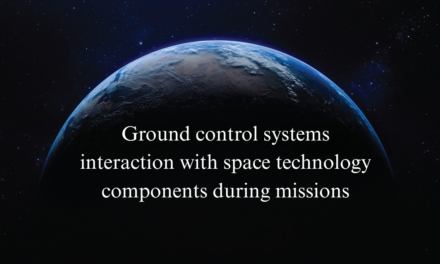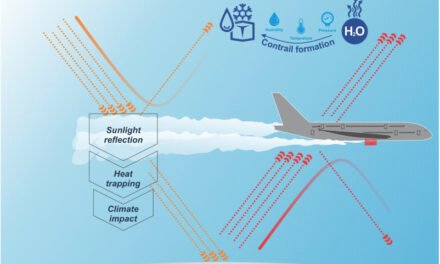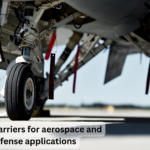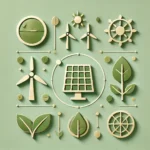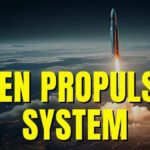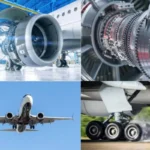Alternative propulsion technologies are emerging as potential solutions to the challenges of long-haul flights, addressing efficiency, environmental sustainability, and operational viability. Here’s how these technologies aim to overcome key challenges:
1. Hydrogen Propulsion
- High Energy-to-Weight Ratio: Hydrogen offers a higher specific energy (energy per unit mass) compared to traditional jet fuels, making it promising for long-haul applications despite its lower energy density by volume.
- Zero Carbon Emissions: When burned in engines or used in fuel cells, hydrogen emits only water vapor, significantly reducing greenhouse gas (GHG) emissions.
- Fuel Cell Propulsion for Electric Power: Hydrogen fuel cells can power electric motors, providing a clean alternative for propulsion systems without relying on combustion.
- Challenges Addressed:
- Reduces the carbon footprint of long-haul aviation.
- Provides a clean alternative to kerosene-based jet fuel.
2. Sustainable Aviation Fuels (SAFs)
- Drop-In Compatibility: SAFs can be used with existing jet engines and airport infrastructure, making them an immediate option for reducing emissions in long-haul flights.
- Carbon-Neutral Potential: SAFs produced from biomass, waste, or synthetic processes can achieve significant lifecycle carbon reductions.
- High Energy Density: SAFs retain the high energy density of traditional fuels, making them suitable for the range and payload requirements of long-haul aviation.
- Challenges Addressed:
- Supports the decarbonization of long-haul flights without requiring major changes to aircraft design.
- Eases the transition by utilizing existing infrastructure.
3. Hybrid-Electric Propulsion
- Efficient Energy Use: Combines traditional jet engines with electric propulsion systems, optimizing energy use during different phases of flight.
- Load Management: Electric systems handle peak power demands (e.g., during takeoff), while traditional engines operate at optimized efficiency for cruise, improving overall fuel efficiency.
- Range Extension: By combining energy sources, hybrid systems can extend the range and reduce fuel consumption compared to conventional engines.
- Challenges Addressed:
- Reduces fuel burn and emissions for long-haul flights.
- Gradual transition pathway to fully electric or alternative systems.
4. Nuclear Propulsion (Experimental/Conceptual)
- High Energy Density: Nuclear propulsion systems could provide the vast energy required for long-haul flights with minimal fuel mass.
- Extended Range: Capable of powering flights for thousands of kilometers without refueling.
- Challenges Addressed:
- Reduces the need for frequent refueling, making ultra-long-haul flights feasible.
- Addresses energy density limitations of batteries or hydrogen.
5. Advanced Electric Propulsion with Energy Storage Innovations
- Battery and Energy Storage Advances: Development of ultra-high-density batteries (e.g., solid-state, lithium-air) could eventually make electric propulsion viable for longer ranges.
- Distributed Propulsion Systems: Electric propulsion allows for distributed engines, improving aerodynamic efficiency and reducing drag, critical for long-haul performance.
- Challenges Addressed:
- Reduces dependency on traditional fuels.
- Improves energy efficiency for sustained long-distance travel.
6. Blended and Hybrid Wing Designs
- Improved Aerodynamics: Aircraft with alternative propulsion systems, like blended-wing bodies, optimize aerodynamic efficiency, reducing energy requirements for long-haul flights.
- Integrated Propulsion Systems: These designs allow better integration of hydrogen tanks or battery systems, addressing storage and weight distribution challenges.
- Challenges Addressed:
- Enhances fuel efficiency for extended flight durations.
- Accommodates alternative fuel storage needs.
7. Overcoming Infrastructure Challenges
- Hydrogen Refueling Infrastructure: Developing global hydrogen production and refueling systems to support hydrogen-powered aircraft.
- SAF Production Scaling: Expanding SAF production and supply chains to meet the demands of long-haul aviation.
- Energy Recharging and Storage: Implementing efficient charging and energy storage facilities for electric and hybrid-electric aircraft.
8. Addressing Climate Impacts
- Contrail Reduction: Hydrogen and electric propulsion technologies aim to reduce contrail formation, mitigating their warming effects at high altitudes.
- Lifecycle Emissions: Alternative fuels and propulsion systems focus on reducing emissions across their entire production and operational lifecycle.

